Search Images
Browse Content (p. 565)
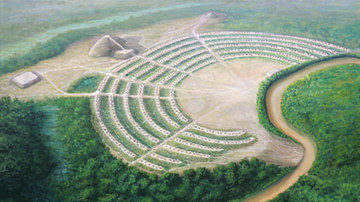
Image
Artist's Conception of Poverty Point, Louisiana
Artist's conception of the prehistoric Native American site Poverty Point in Louisiana, dated to c. 1700-c.1100 BCE. Poverty Point was considered the oldest mound site in North America until the discovery of Watson Brake in the 1980's.
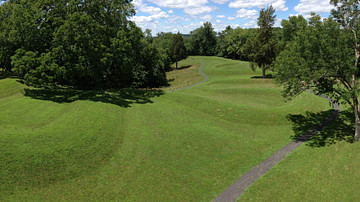
Image
Great Serpent Mound, Ohio
Image of part of the Serpent Mound (also known as the Great Serpent Mound) in Ohio, USA, dated to either c. 320 BCE or c. 1000-1750 CE. The difference in the dates is due to interpretation of carbon dating of finds at the site. It is probable...
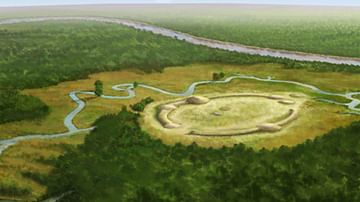
Image
Artist's Conception of Watson Brake Mounds, Louisiana
Artist's conception of the prehistoric Native American site of Watson Brake, Louisiana, dated to c. 3500 BCE.
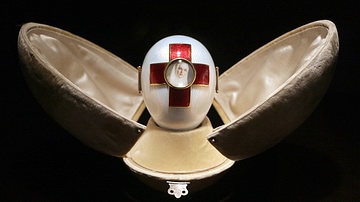
Image
Red Cross with Triptych Egg by Fabergé
The 1915 Red Cross with Triptych Egg by Peter Carl Fabergé (1846-1920). The egg was given by Tsar Nicholas II (r. 1894-1917) to his wife Alexandra Feodorovna. The egg commemorates the founding of the Russian Red Cross by the empress. It is...
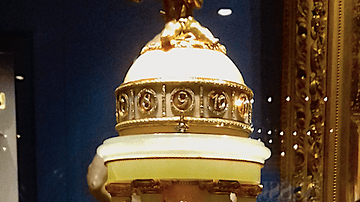
Image
Imperial Colonnade Egg by Fabergé
The 1910 Imperial Colonnade Egg by Peter Carl Fabergé (1846-1920). The egg was given by Tsar Nicholas II (r. 1894-1917) to his wife Alexandra Feodorovna. The egg is made from gold with pink enamel while the temple support consists of six...
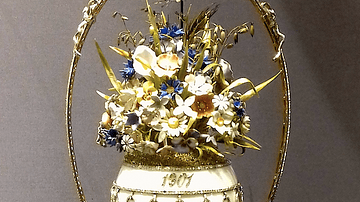
Image
Basket of Flowers Egg by Fabergé
The 1901 Basket of Flowers Egg by Peter Carl Fabergé (1846-1920). The egg was given by Tsar Nicholas II (r. 1894-1917) to his wife Alexandra Feodorovna. The egg is made of gold and silver with a white oyster enamel shell and a blue enamel...
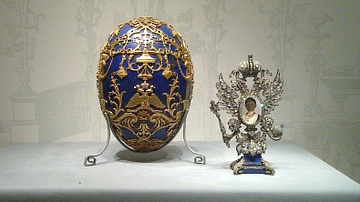
Image
Imperial Tsarevich Egg by Fabergé
The 1912 Imperial Tsarevich Egg by Peter Carl Fabergé (1846-1920). The egg was given by Tsar Nicholas II (r. 1894-1917) to his wife Alexandra Feodorovna. The egg is made of gold and six lapis lazuli sections with diamond decoration. The latticework...
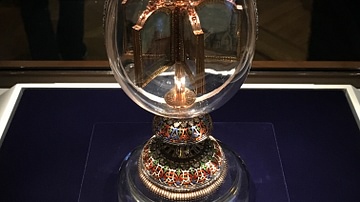
Image
Revolving Miniatures Egg by Fabergé
The 1896 Revolving Miniatures Egg by Peter Carl Fabergé (1846-1920). The egg was given by Tsar Nicholas II (r. 1894-1917) to his wife Alexandra Feodorovna. The egg and base is made of rock crystal with enamel and diamond additions on the...
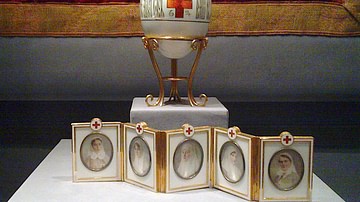
Image
Imperial Red Cross Egg by Fabergé
The 1915 Imperial Red Cross Egg by Peter Carl Fabergé (1846-1920). The egg was given by Tsar Nicholas II (r. 1894-1917) to his mother the Dowager Empress Marie Feodorovna. It commemorates the dowager's role as head of the Russian Red Cross...
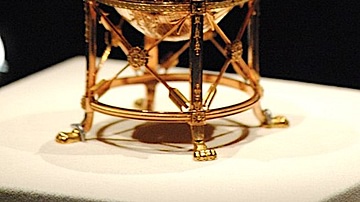
Image
Imperial Pelican Egg by Fabergé
The 1898 Imperial Pelican Egg by Peter Carl Fabergé (1846-1920). The egg was given by Tsar Nicholas II (r. 1894-1917) to his mother the Dowager Empress Marie Feodorovna. It commemorates the 100th anniversary of the charitable institutions...